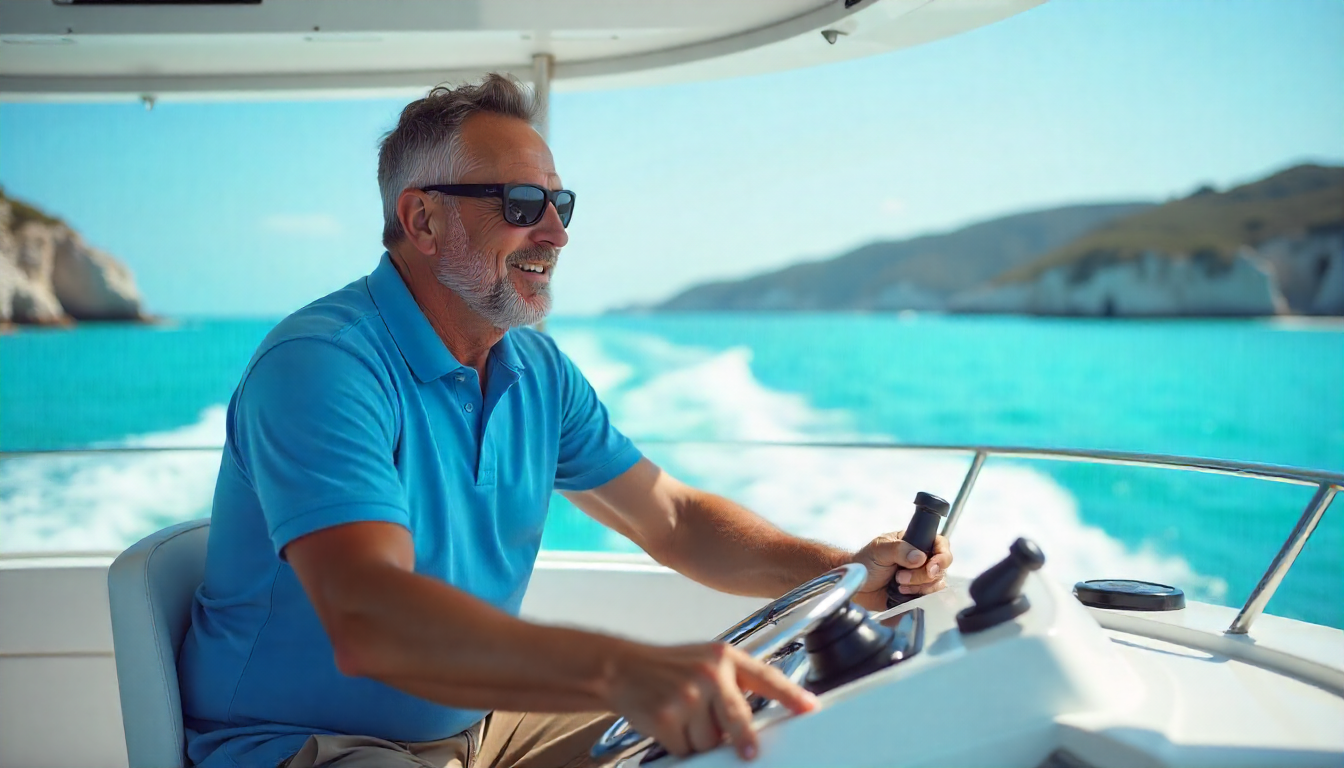When setting out on a long sailing trip, many sailors ask: do yachts have autopilot? The answer is a resounding yes. In fact, modern yachts often rely heavily on autopilot systems to reduce fatigue, maintain an accurate course, and improve safety while at sea. With advances in marine technology, autopilot systems are no longer exclusive to commercial ships—they are essential tools for yacht owners of all experience levels.
This article explores how autopilot works on yachts, the types of systems available, their key components like the course computer, drive unit, and control unit, and when you should engage the autopilot switch system.
What Is an Autopilot System on Yachts?
An autopilot system is an electronic and mechanical setup that allows a yacht to steer itself based on pre-set routes or compass headings. This system is particularly valuable during extended voyages or solo sailing.
Autopilot systems on yachts help maintain a steady course without human input, using a combination of sensors, a course computer, and drive mechanisms that adjust the rudder. They’re designed to work seamlessly with a yacht’s existing steering system, whether it’s hydraulic, mechanical, or electric.
Components of an Autopilot System
To fully grasp how autopilot works on yachts, you need to understand its main components. These elements work together to allow the boat to steer automatically and accurately.
1. Course Computer
The course computer is the brain of the autopilot system. It receives data from various sensors, like compasses and wind vanes, then calculates how the rudder should be adjusted to maintain the desired course. High-end course computers may also factor in heel, pitch, and yaw using 9 axis sensors.
In many advanced yachts, course computers are paired with GPS and chartplotters to follow complex routes.
2. Drive Unit
The drive unit physically moves the rudder. It takes commands from the course computer and adjusts the steering accordingly. Drive units come in various styles such as rotary drives, hydraulic drives, or linear drives depending on the yacht’s steering mechanism.
For example, larger yachts may use a hydraulic and electric drive unit combination to accommodate heavier rudder loads.
3. Control Unit
Also called the autopilot control unit, this is the interface where the sailor interacts with the system. It includes buttons or touchscreen displays to set course, engage or disengage the autopilot, or adjust the parameters.
Some control units can be handheld or accessed via remote controls, adding more flexibility for crew movement on the yacht.
Types of Autopilot Systems on Yachts
There are several autopilot configurations based on yacht size, steering system, and usage type.
Tiller Pilot Systems
A tiller pilot is a compact autopilot system mounted directly onto the tiller arm of smaller yachts. It’s most commonly used in sailing yachts under 35 feet.
How tiller pilots work: They include a mini course computer and motor that pushes or pulls the tiller based on steering corrections. Though less powerful than full systems, tiller pilots are ideal for weekend sailors or coastal cruising.
You may also encounter upgraded tiller pilots with wireless remotes or GPS-based functions. Some yachts use multiple tiller pilots for redundancy or shared steering loads.
Wheel-Steered Autopilot Systems
For larger sailing yachts or motor yachts with a wheel, autopilot systems are more sophisticated. These setups usually involve a separate drive unit connected to the wheel mechanism and a dedicated control unit.
In these configurations, the course computer is often mounted inside the cabin, and a network of sensors feeds it information about heading, speed, and wind.
How Does an Autopilot Know Where to Steer?
Autopilots steer yachts using inputs from multiple sensors. A magnetic compass provides heading direction, while GPS data refines the yacht’s position and route. Wind sensors may also contribute, especially in sailing yachts, enabling the autopilot to adjust for shifting wind angles.
In some yachts, the autopilot system includes advanced sensors like the 9 axis sensor that captures pitch, roll, and yaw data. This allows for incredibly accurate adjustments, particularly in rough weather.
With this information, the course computer calculates rudder adjustments and activates the drive unit.
When and Why to Use Autopilot on Yachts
Yachts often rely on autopilot during open sea passages, night sailing, or long transits through monotonous routes. Using autopilot reduces physical strain on the crew and helps maintain a consistent course, even through changing sea conditions.
Autopilot becomes particularly useful when sailing solo or shorthanded. It allows sailors to perform other tasks—like navigating, handling sails, or cooking—without needing to hand steer continuously.
However, sailors should not become overly reliant. Human oversight is still essential. If conditions become unpredictable, it may be safer to hand steer.
Advantages of Autopilot Systems on Yachts
- Reduced fatigue: Autopilot handles the burden of steering for long periods.
- Increased safety: Allows crew to focus on navigation, lookout, or weather monitoring.
- Accurate route-keeping: Course computers keep the yacht on an exact track.
- Versatility: Compatible with GPS, AIS, and radar for smarter navigation.
Many autopilot systems also feature an autopilot switch system to disengage quickly when manual control is needed.
Limitations and Risks of Autopilot
While autopilot systems are highly advanced, they are not foolproof. Here are some risks and limitations:
- Sensor failure: If a compass or GPS malfunctions, the system may steer off course.
- Mechanical issues: Drive units and control units can fail, particularly under stress.
- Overreliance: Ignoring environmental factors or nearby vessels can lead to accidents.
- Slow response: In sudden weather shifts, hand steering may be more effective.
Maintenance Tips for Autopilot Systems
Yacht owners should conduct regular checks to ensure the autopilot system is functioning properly. Here are key steps:
- Inspect the drive unit regularly for leaks or unusual noises.
- Calibrate the compass and sensors for accuracy.
- Check the course computer for firmware updates.
- Test the control unit and ensure clear visibility and responsiveness.
- Lubricate mechanical parts like the drive shafts and tiller connections.
Real-World Use: A Case Study
A 44-foot sailing yacht used during a solo Atlantic crossing relied heavily on its Raymarine autopilot system. The sailor set a route using the course computer and GPS interface, enabling the yacht to steer for days with only minor adjustments.
The drive unit, a rotary drive, handled the constant steering commands. A control unit near the helm provided instant access to settings, and a backup tiller pilot was on standby.
According to the sailor, “Without autopilot, I would have been exhausted within 48 hours. It worked together perfectly with my navigation tools.”
Choosing the Right Autopilot System
Selecting the right autopilot for your yacht depends on several factors:
- Size of yacht: Larger yachts require more powerful drive units and course computers.
- Type of steering system: Whether you’re using tillers, wheels, or hydraulic steering.
- Intended use: Coastal cruising, ocean passage, or racing all have different demands.
- Integration needs: Do you want the autopilot to work with radar, AIS, or wind sensors?
Many leading brands like Garmin and Raymarine offer autopilot systems tailored to different yacht sizes and styles.
Conclusion: Do Yachts Have Autopilot?
So, do yachts have autopilot? Absolutely. From small sailing yachts to large luxury yachts, autopilot systems have become standard navigation tools.
With components like the course computer, drive unit, and control unit working in harmony, yachts can steer themselves with impressive accuracy. While no system replaces a good sailor, modern autopilot systems make long-distance cruising safer, easier, and more enjoyable.
If you’re planning an extended journey or simply want to reduce the demands of constant hand steer, investing in a reliable autopilot is a wise decision.

 Do Yachts Have Autopilot? How It Works & What to Know">
Do Yachts Have Autopilot? How It Works & What to Know">
